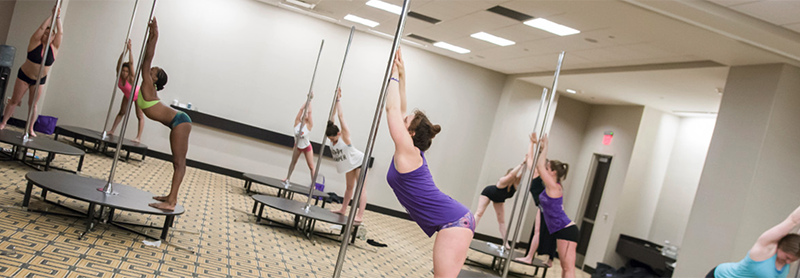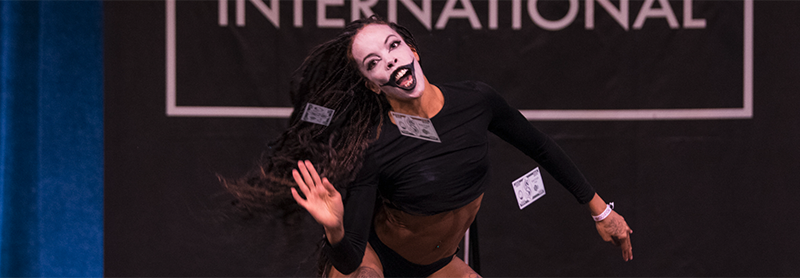So, you’ve been poling for a while, and you want to get some amazing photos…

How to Structure Your Pole Dance Class (Part 1 of 3)
There are plenty of things to consider when starting your own pole studio or becoming a pole instructor for the first time.
One of the first things to consider is how to structure your classes. Some things to consider include class ratios and class length.
How to Determine the Ideal Class Ratio
Vision science journals have shown the maximum number of moving objects a person can track at one time is four.
With this information, we can extrapolate that the maximum ideal class size should be four students moving at once.
This could be a limit of four students, or a limit of four poles with students sharing equipment. Exceeding this number can increase risk for your studio, as the Instructor is unable to to keep an eye on everyone at all times (not their fault! It’s just the human brain). This is especially important to keep in mind if you are teaching kids classes, since children are more challenging to mind than adults.
On the flip side, a 4:1 student to teacher ratio likely makes it impossible to earn a profit (for more on pricing, click here). Rarely are there pole, aerial, floor, or flex class that caps at four people.
6-10 students per class is the most common for pole classes, according to the 2024 Pole Industry Financial Survey. This is also dependent on how big your space is, and how many poles can fit.
How to Determine the Ideal Class Length
Once you have determined how many apparatuses and participants you want for your classes, next decide how long you want your classes to be.
Most pole studios opt for a 1 hour class which includes warm up and cool down in the hour, meaning about 40 minutes to spend on the “meat” of the class. If students are sharing poles, that means about 20 minutes of strenuous work per person. Workshop length is typically more like 90 minutes. Some pole studios host regular classes that are 75 minutes long.
If you want your students to have more time on the pole, you could have a designated warm up area with warm up exercises written out for the higher level classes–ones with students who have been coming for a while and know how to warm themselves up. You could encourage students to come 15 minutes early to warm themselves up so they can get more time on the pole. The flipside of this is they may not have done a move-specific warm-up for the lesson plan that day and may not be fully prepared.
Beginner levels should always have an instructed warm up, with form corrections supplied as needed. You have the option of making the beginner classes 15 minutes longer to get the instructed warm up in class, or keep your beginner and intermediate/advanced classes the same length and more time on the pole counts as leveling up. Read more about warm-ups here.
It’s your studio/class, so you get to make the rules!
Ultimately, you know your student and instructor population best and can make the best determination for class ratio and class length to maximize instruction, student experience, and covering expenses.
And remember, you don’t have to be perfect immediately!
You can always start with what you would prefer as a student and make changes as you get to know the needs of your students and instructors. There is also nothing wrong with having a mix of longer and shorter classes depending on what your students need and instructors want to teach.



